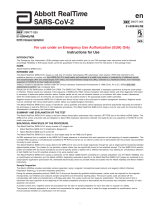
iii
Table of Contents continued
VENTANA BenchMark ULTRA IHC
Optimisation Process (for iView and ultraView ONLY) 38
VENTANA BenchMark ULTRA IHC
Optimisation Process (for OptiView ONLY) 39
Central Management 40
Using the Central Management Feature ..........................................40
Quick Tips .................................................................................................40
Archiving 41
What is Archiving?..................................................................................41
Why is Archiving Important to the Performance of My
Instrument? ...............................................................................................41
When Should Archiving Be Performed? ...........................................41
How Long Does Archiving Take? .......................................................41
Best Practices for Archiving ................................................................42
Slide Reports 18
Batch Run Reports .................................................................................19
Case Reports ............................................................................................18
Setting up a Case Report......................................................................20
Consolidated Run Report......................................................................22
Using the Consolidated Run Report—Examples of Multi-Select
Options .......................................................................................................24
Setting up a Consolidated Run Report .............................................24
VENTANA System Software 27
What’s New in VSS v 12.3 .....................................................................27
Protocol Editor .........................................................................................29
Selectable Protocol Options ................................................................30
Protocol Views .........................................................................................31
Protocol Flexibility 32
How to: 34
How to Filter Protocols ..........................................................................34
How to Search Protocol Steps by Keyword .....................................35
How to Print from the Protocol Editor ...............................................36
How to Use the Zoom Feature ............................................................37






















